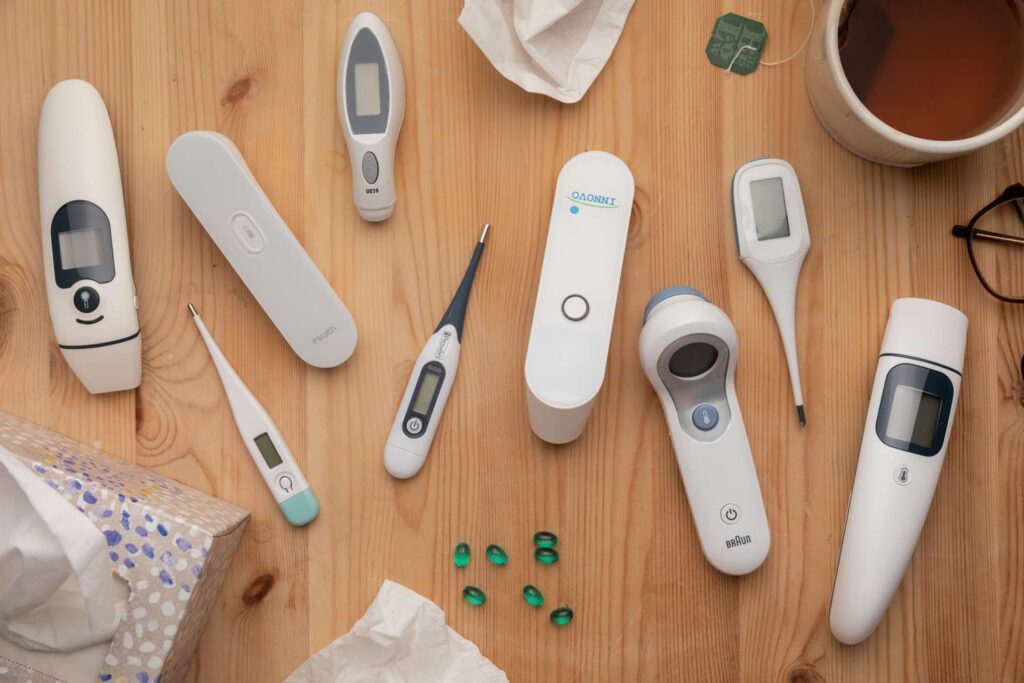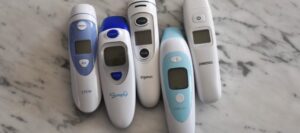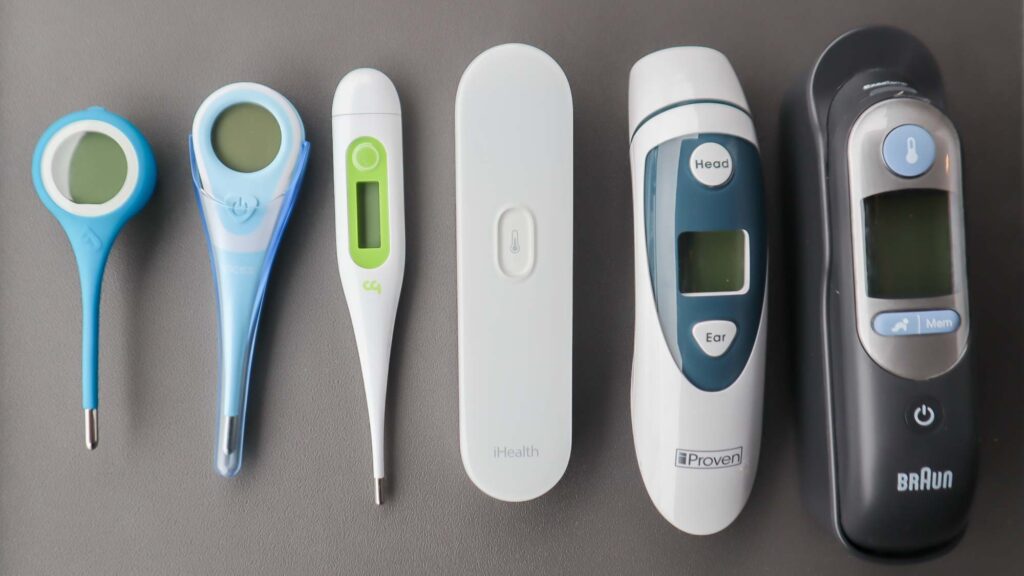Blog
Top Thermometers for Fast and Accurate Temperature Readings
A reliable thermometer is an essential tool for every household. Whether you’re monitoring a fever, tracking recovery from an illness, or simply ensuring everyone’s health, having a thermometer that provides fast and accurate readings is critical. With advancements in technology, thermometers have become more versatile and user-friendly, offering a variety of options to suit different needs.
In this guide, we’ll explore the top thermometers for fast and accurate temperature readings, their features, and tips for selecting the right one for your household.
1. Why Thermometers Are Essential
Thermometers play a crucial role in health management, allowing you to monitor temperature changes that may indicate illness or infection. They are particularly important for:
- Tracking Fevers: A key symptom of many illnesses.
- Monitoring Recovery: Ensuring body temperature returns to normal after an illness.
- Childcare: Quickly identifying fevers in children.
- Managing Chronic Conditions: Tracking symptoms of conditions like autoimmune diseases.

Having a dependable thermometer ensures you can take action promptly and communicate effectively with healthcare professionals.
2. Key Features to Look for in a Thermometer
When choosing a thermometer, consider the following features to ensure you get accurate and convenient readings:
1. Speed
- Fast results are crucial, especially when dealing with children or emergencies.
2. Accuracy
- Reliable readings help you make informed decisions about seeking medical care.
3. Versatility
- Look for thermometers that can measure temperature in different ways (forehead, ear, oral, or rectal).
4. Ease of Use
- User-friendly designs with clear displays and simple operation.
5. Hygienic Design
- Options like contactless thermometers or those with disposable covers reduce contamination risks.
6. Memory Function
- Thermometers that store past readings help track temperature trends over time.
3. Types of Thermometers
Thermometers come in several types, each suited for different needs:
1. Digital Thermometers
- Provide quick and accurate readings.
- Suitable for oral, rectal, or underarm use.
2. Infrared (Contactless) Thermometers
- Measure temperature without physical contact, ideal for hygiene.
- Perfect for babies and young children.
3. Ear (Tympanic) Thermometers
- Use infrared sensors to measure temperature inside the ear canal.
- Quick and non-invasive.
4. Temporal Artery (Forehead) Thermometers
- Use infrared sensors to scan the forehead.
- Provide fast, accurate readings.
5. Mercury Thermometers
- Old-fashioned but reliable; however, less commonly used due to safety concerns.
4. Top Thermometers for Fast and Accurate Temperature Readings
Here are the best thermometers available in 2024, each excelling in speed, accuracy, and usability:
1. Braun No Touch + Forehead Thermometer
Features:
- Contactless operation ensures hygiene.
- Fast readings within 2 seconds.
- Color-coded fever guidance for easy interpretation.
- Silent mode for taking temperatures while someone sleeps.
Best For:
Families with young children and those prioritizing hygiene.
2. iHealth No-Touch Forehead Thermometer
Features:
- Contactless design reduces contamination risk.
- Quick readings in less than a second.
- Large, easy-to-read LED display.
- Vibration feedback for silent operation.
Best For:
Tech-savvy users seeking a modern, hygienic thermometer.
3. Kinsa Smart Thermometer
Features:
- Bluetooth connectivity syncs with the Kinsa app for tracking symptoms.
- Offers personalized health advice based on readings.
- Versatile design for oral, underarm, or rectal use.
- Ideal for family use, with multi-user profiles.
Best For:
Families who want to monitor and manage health trends digitally.
4. Exergen Temporal Artery Thermometer
Features:
- Infrared technology scans the forehead for accurate readings.
- Non-invasive and gentle for babies and toddlers.
- Provides results in just 2-3 seconds.
Best For:
Parents who need a quick and gentle thermometer for children.
5. Braun ThermoScan 7
Features:
- Pre-warmed tip ensures consistent accuracy.
- Age Precision feature adjusts fever guidance based on age.
- Measures temperature in the ear canal in seconds.
Best For:
Those seeking a reliable ear thermometer with advanced features.
6. Vicks ComfortFlex Digital Thermometer
Features:
- Flexible tip for comfortable oral, rectal, or underarm use.
- Fever insight with color-coded display (green, yellow, red).
- Quick 8-second readings.
Best For:
Households looking for an affordable, versatile thermometer.
7. ThermoWorks Wand No-Touch Infrared Thermometer

Features:
- Accurate readings from a safe distance of 1–2 inches.
- Measures surface, ambient, and body temperatures.
- Large backlit display for easy viewing.
Best For:
Individuals who want a multi-functional thermometer for home and health use.
8. Frida Baby 3-in-1 Infrared Thermometer
Features:
- Measures temperature via ear, forehead, or room mode.
- Suitable for babies, toddlers, and adults.
- Stores up to 40 previous readings.
Best For:
Parents seeking a versatile thermometer for all ages.
5. How to Use a Thermometer Correctly
Using a thermometer properly is essential for obtaining accurate readings. Follow these steps:
1. Prepare the Thermometer
- Ensure the device is clean and functional.
- If required, attach disposable covers to maintain hygiene.
2. Position Correctly
- Forehead Thermometers: Hold close to the forehead without touching.
- Ear Thermometers: Insert gently into the ear canal.
- Oral Thermometers: Place under the tongue and close the mouth.
3. Stay Still
- Minimize movement during measurement to ensure accuracy.
4. Record the Reading
- Note the temperature and compare it to normal ranges.
5. Clean After Use
- Wipe down the thermometer with an alcohol-based solution or follow manufacturer guidelines.
6. Tips for Choosing the Right Thermometer
1. Consider the User
- For infants: Use gentle forehead or ear thermometers.
- For adults: Digital thermometers offer versatile use.
2. Prioritize Speed
- Fast readings are essential for managing young children or emergencies.
3. Choose Hygienic Designs
- Opt for contactless models or those with disposable covers.
4. Look for Advanced Features
- Memory storage, fever guidance, and app integration add convenience.
7. When to Use a Thermometer
Thermometers are useful in various scenarios:
- Illness Monitoring: Track fevers and recovery progress.
- Post-Vaccine Check: Monitor temperature after vaccinations.
- Seasonal Illness: Keep an eye on flu symptoms.
If a fever persists or exceeds 103°F (39.4°C) for adults or 100.4°F (38°C) for children, consult a healthcare professional.
8. Future Trends in Thermometer Technology
Thermometers are evolving to include features like:
- AI Integration: Predict trends based on temperature history.
- Enhanced Connectivity: Sync data with health monitoring apps.
- Multi-Functional Use: Devices that monitor temperature and other vitals.
These advancements will make thermometers even more accurate, convenient, and essential in health management.
Conclusion
A dependable thermometer is a must-have for every household, offering fast and accurate temperature readings to manage health effectively. From advanced contactless models to versatile smart thermometers, there’s an option for every need and budget.
By choosing the right thermometer for your family, you can ensure you’re prepared to monitor fevers, track recovery, and maintain overall well-being. Explore the top options listed above and invest in a reliable thermometer today for peace of mind and better health management.

